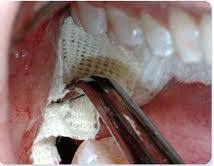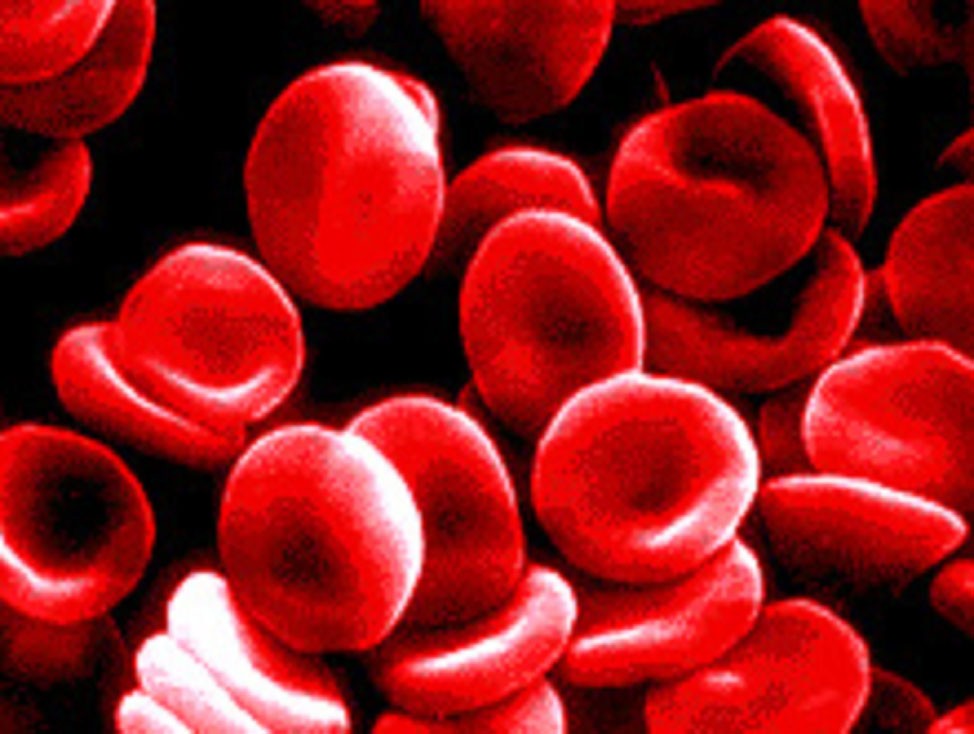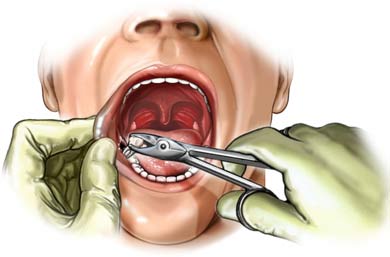 Introduction to the management of tooth extraction bleeding
Introduction to the management of tooth extraction bleeding
Many patients do not know what to expect after having there tooth extracted at the dentist. Some panic when they see some blood on their mouth whereas some do not even bother if they bleed out profusely. This is a simple instruction guide for patients to follow so that they can manage the bleeding at the surgical tooth extraction site.
 How to control the tooth extraction bleeding ?
How to control the tooth extraction bleeding ?
Once a tooth extraction surgery has been completed, the initial maneuver to control the bleeding tooth socket by the dental surgeon is to place a small gauze (similar to a cotton roll or ball) directly over the socket. The size of the gauze must be just small enough to cover the extraction site. This gauze may be moistened so that the oozing blood does not coagulate in the gauze and then dislodge the blood clot when the gauze is removed.
Following instructions that the patient should follow :
Bite firmly on the gauze for at least 30 minutes and not chew on the gauze. The patient should hold the gauze in place without opening or closing the mouth. Talking should be kept at a minimum for 2 to 3 hours.
It is normal for the fresh extraction site to ooze blood slightly for up to 24 hours after the tooth extraction. Sometimes a small amount of blood might mix with the saliva and make it seem like the patient is bleeding excessively.
If the bleeding is more than a slight ooze from the tooth extraction site, the patient is advised to reapply a small fresh gauze at the tooth extraction site and hold it in place for at least 30 minutes to control the bleeding. The whole idea is to apply pressure to arrest the bleeding.
Further control of the bleeding can be acquired by having the patient bite on a tea bag for 30 minutes. The tannic acid in most tea’s will serve as a vasoconstrictor to constrict the blood vessels and reduce bleeding.
What to avoid so that the bleeding is not further aggravated?
Patients who smoke are advised to avoid smoking for the first 12 hours. If however they must smoke, draw on the cigarette lightly. This is because, tobacco smoke and nicotine interfere with wound healing.
Patients are also advised not to suck on a straw when drinking or spit any fluid out from the mouth as this creates negative pressure. This negative pressure may trigger mechanical irritation to the tooth extraction site and trigger blood to gush out. Try to swallow the saliva instead of spitting it out even if it has blood.
Do not do any strenuous exercise for the first 24 hours after the tooth extraction, the increased blood pressure might stimulate bleeding.
 What to expect after the tooth extraction ?
What to expect after the tooth extraction ?
Patients should be warned that there may be some oozing of blood from the tooth extraction site at night and that they will most probably have some blood stains on their pillows. So do not panic and call your dental surgeon in the middle of the night if you see this.
When to call your dental surgeon ?
If a patient is worried or this is the first time they had an tooth extraction done, they can always call the dental surgeon as it is their duty to give you proper instructions and tell you what to expect.
If there is prolong oozing , bright red bleeding or large clots at the tooth extraction site after 24 hours, do not hesitate to make a return visit to your dental surgeon. The dental surgeon will re-examine the area and take appropriate measures to control the bleeding.
What steps would a dental surgeon to control bleeding ?
Firstly , the dental surgeon would check to see where the bleeding is coming from. Bleeding can come form 2 sites, the soft tissue (gums) or the jaw bone from the tooth extraction site.The dental surgeon would initially use a gauze and apply firm pressure to the tooth extraction site for 5 to 10 minutes.
If the bleeding persist from the soft tissue:
The dental surgeon would give an injection of local anesthetic to the tooth extraction site. This is the same injection that he or she would have given to the patient before carrying out the extraction. This local anesthetic contains adrenaline, the adrenaline would help constrict the blood vessels and stop the bleeding.
Materials like Gelfoam and Regenerated cellulose oxide can also be applied to the tooth extraction area. This forms a scaffold at the extraction site for the formation of a blood clot. The blood clot will stop the bleeding.
Topical thrombin is also applied to the area. Thrombin is a chemical that converts fibrinogen to fibrin. Basically promotes the formation of a clot to control bleeding.
Collagen plug can also be used to control bleeding by promoting platlet (factor important to stop bleeding)Â aggregation.
Pingback: Tweets that mention Management of bleeding after a tooth extraction | Intelligent Dental -- Topsy.com
Great site. A lot of useful information here. I’m sending it to some friends!
Pingback: Common Inflammatory Disease of the Jaw Bone | Intelligent Dental
Pingback: Do you suffer from orofacial dyskinesis | Intelligent Dental
Pingback: How do you know if toothache is caused by sinus infection? | Intelligent Dental
i want to know about the use of Traxamaic acid for arrest dental extraction bleeding
IT is a wonderful site for dental surgeon.dentist s are more benefecial on this site like me whose are working in rural area.
Pingback: How to Identify Risk Factors for Gingivitis | Intelligent Dental
it is good presentation
ilike it thank you
Pingback: What to Eat After Having My Teeth Extracted - Teeth Whitener and More